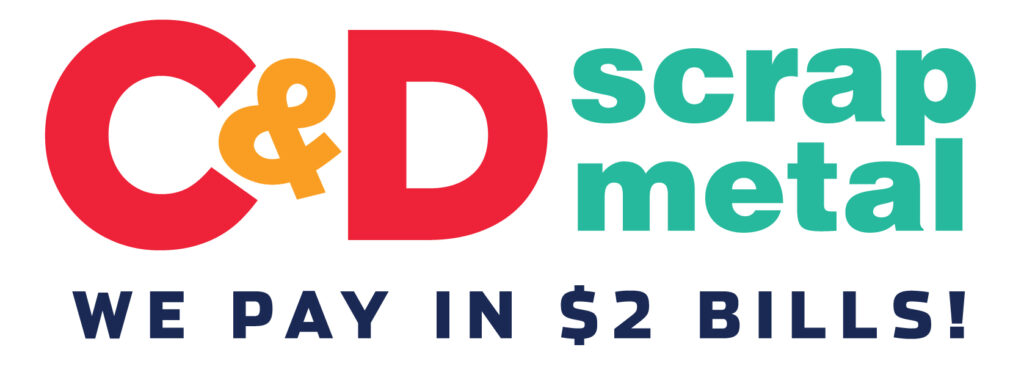The History of Brass
From the shimmering artifacts of ancient civilizations to the ornate adornments of modern-day societies, brass has woven its narrative through the tapestry of human history. An alloy that marries the durability of copper with the versatility of zinc, brass emerged as a material that shaped tools, culture, and art.
- Ancient Beginnings: Brass's initial traces are found in the archaeological remnants of ancient Sumer, located in present-day Iraq, as far back as 5000 BC. However, the early versions of brass were likely created unintentionally by smelting copper ores that had zinc in them.
- The Roman Era: Brass witnessed a surge in popularity during the Roman Empire, around 30 BC to AD 300. Known as 'Aurichalcum', which translates to 'golden copper', this alloy was valued for its gold-like appearance and was used extensively in coinage, armor, and ornaments. The Romans perfected the method of adding zinc to copper intentionally to produce brass, revolutionizing its production.
- Middle Ages: After the fall of the Roman Empire, the art of brass-making traveled. By the medieval period, brass was being manufactured in Germany, Belgium, and England. Cities like Dinant and Aachen became renowned brass-manufacturing centers. Brass artifacts from this period, such as the famous English 'latten' objects, offer insights into the alloy's cultural significance.
- Renaissance & Beyond: The Renaissance saw an artistic awakening, and brass played its part. Instruments like the trumpet and the trombone, crafted from brass, became symbols of the age's musical renaissance. Beyond the West, in China, brass mirrors were being meticulously carved, while in India, the alloy transformed into lamps and idols.
- Industrial Revolution: As the world hurtled into the age of machinery, brass's importance grew manifold. Its anti-corrosive property made it vital for naval instruments. Simultaneously, its malleability and low melting point made it an ideal material for cartridges in firearms.
- Modern Times: Today, brass's legacy continues, adapting and evolving with human needs. Its antimicrobial properties are being leveraged in healthcare settings, especially in a world grappling with pandemics. Moreover, as societies pivot towards sustainability, the recycling of brass has taken center stage, emphasizing the alloy's enduring relevance.
In essence, the history of brass is a testament to human ingenuity. From accidental discovery to intentional innovation, brass' journey mirrors the evolution of civilization, reflecting humanity's enduring quest for beauty, utility, and progress.
What is Brass?
Brass, known for its shiny gold-like appearance, is more than just a beautiful metal. It's made by combining copper and zinc, and the way it's made can change its properties.
The essence of brass comes from blending copper and zinc in different amounts. This mixture can result in brass with different colors, from reddish-gold to a deeper yellow-gold. By adding other elements like lead, tin, or phosphorus, brass can be adjusted to have various properties, creating different types of brass for specific uses.
For instance, if brass has more copper, it becomes softer and easier to shape. This kind of brass is often used to create detailed jewelry and artistic pieces. On the other hand, if it has more zinc, it becomes stronger and durable, suitable for making heavy-duty parts.
Beyond this, by adding other metals to the mix, specialized types of brass can be created to meet specific needs. These variations can address unique requirements, such as resisting corrosion from seawater or being easier to work with in industrial settings. To understand brass, you have to appreciate its ability to adapt and change. It's not just one type of metal; it's like a symphony of elements, each carefully adjusted to make a material that's been important to human civilization for a very long time.

What Do We Use Brass For?
Brass is not just about its shiny appearance; it's both beautiful and useful. Its unique properties, like being easy to shape and resistant to rust, have made it important in many areas.
In history, brass was used to create detailed art, musical instruments that sound great, and tough tools. Artists loved its shine and used it for sculptures, coins, and decorations. Ancient civilizations used it to make jewelry, religious objects, and everyday things that we still admire today.
Even in the world of machines and technology, brass is a top choice. It's strong and can withstand wear and tear, so it's used for gears, bearings, and valves. In electrical stuff, its ability to conduct electricity makes it great for connectors, terminals, and switches.

Brass in Music
Brass instruments like trumpets and tubas are loved for their ability to create and amplify beautiful sounds. They've been a big part of music in symphonies, parades, and cultural celebrations worldwide. But nowadays, brass has more uses.
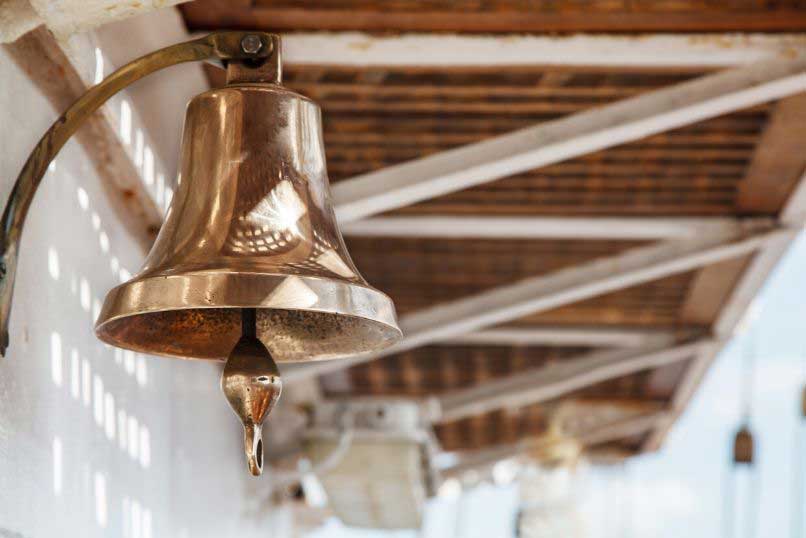
Brass in Construction
Brass, celebrated for its unique blend of strength and elegance, has a longstanding history as a preferred material for a wide range of fixtures and fittings. Its resistance to rust and corrosion, especially in salt water, makes it essential for things like ship instruments, plumbing fittings and underwater fixtures.
The story of brass is all about adapting to change. It started in ancient art and now it's in modern machines and even healthcare. From classic musical instruments to the latest medical advances, brass has always been a valuable and versatile material in human progress.
Modern Uses of Brass
As the world evolves, so does our utilization of materials. Brass, with its age-old allure, seamlessly integrates into modern applications, proving its undying relevance across varied sectors.
Brass's versatility is evident in its myriad applications, from the intricacies of modern tech to the grandeur of architectural designs, emphasizing its continued relevance in today's world.
Understanding the Types of Brass and Their Chemical Compositions
Brass, a remarkable alloy of copper and zinc, finds its way into countless everyday items, from musical instruments to plumbing fixtures. However, not all brass is created equal, and the key to comprehending its value lies in its chemical composition, particularly the copper content. Copper content plays a significant role in driving the quality and characteristics of the brass product.
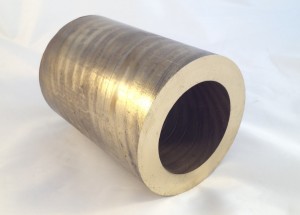
Aluminum Bronze
Aluminum bronze is a special type of brass with aluminum as the primary alloying element. It often contains a copper content of 90% or more, making it exceptionally corrosion-resistant and suitable for marine applications.
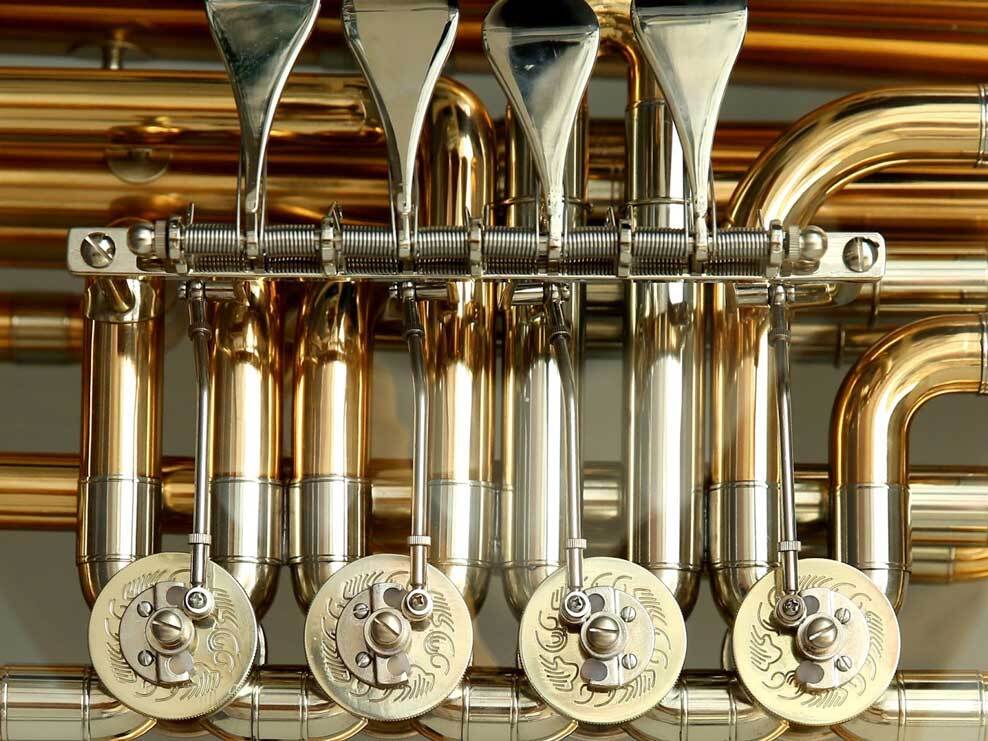
Yellow Brass
Yellow brass is recognized for its bright golden appearance and typically contains around 60-70% copper. It's commonly used in various decorative and functional applications, such as plumbing fixtures.
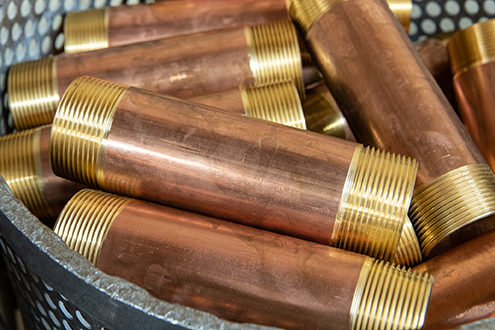
Red Brass
With a higher copper content of around 85-90%, red brass exhibits a distinct reddish hue. This type of brass is prized for its durability and resistance to corrosion, making it ideal for manufacturing valves, pump components, and more.
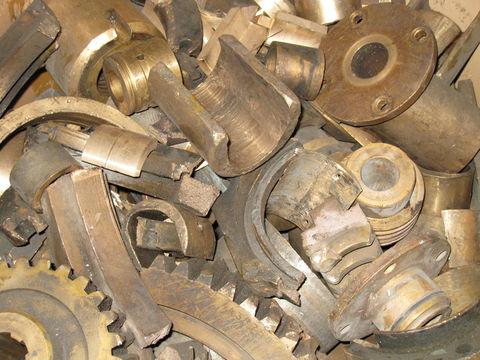
Hard Brass
Hard brass, typically comprising 70-80% copper, is known for its excellent machining properties. This type of brass is often used in applications that require intricate, precision components.
Environmental Benefits of Recycling Brass Metals

Brass recycling stands at the forefront of sustainable practices with profound environmental benefits. Central to this is the conservation of our planet's finite resources. Every recycled bit of brass reduces the demand for extensive mining, preserving natural landscapes and ensuring the conservation of water, given the water-intensive nature of mining operations.
A standout benefit of brass recycling is the significant reduction in energy consumption. The energy required to recycle brass pales in comparison to that needed for processing raw ores. Some estimates suggest that metal recycling can lead to a whopping 90% energy savings over primary production. This decreased energy requirement directly translates to fewer fossil fuels being consumed, which in turn results in a marked reduction in greenhouse gas emissions.
Equally compelling is the reduction of pollution brought about by recycling. Traditional methods of mining and refining are major culprits in environmental pollution, from tailings in water bodies to harmful emissions in the air. In stark contrast, recycling emerges as a cleaner alternative, ensuring cleaner air, water, and soil.
Recycling brass plays a pivotal role in shaping sustainable and resilient economic ecosystems, fostering job growth, innovation, and stability.
The Process of Recycling Brass
Like copper, the recycling journey of brass is an intricate dance of precision and innovation, reiterating the metal's enduring value. Every step in this journey, from collection to the final casting, is underpinned by a commitment to environmental sustainability and resource efficiency, making the entire process both meticulous and immensely rewarding.
- Collection: The first step beckons the retrieval of once-valued items. Brass artifacts, such as age-old musical instruments, decorative fixtures, and components from machinery that have outlived their primary purpose, are accumulated. This assembly is not merely about gathering waste but is the starting point of giving these objects a new lease on life.
- Processing: As these varied items come together, they need to be prepped for their transformation. This involves breaking them down to their base form. They are often shredded, simplifying their structure and making them more manageable, ensuring that the subsequent steps in the recycling process are conducted with heightened efficiency.
- Separation: Brass, being an alloy primarily of copper and zinc, often has other materials and impurities clinging to it, especially if it's from intricate machinery or decorated fixtures. This step is all about purity. The alloy is meticulously separated from any accompanying materials, ensuring that what remains is brass in its quintessential form, free from extraneous elements.
- Melting and Casting: With the brass now in its pure form, it's time for its metamorphosis. The brass is melted down, and in this molten state, it's pliable, ready to be molded into a myriad of shapes and forms. Whether it's to be cast into new instruments, chic fixtures, or integral machinery parts, this brass is now rejuvenated, poised to embark on its next chapter.
Brass, with its brilliant blend of aesthetics, durability, and versatility, has cemented its place in human history and continues to shine in modern applications. Its eco-friendliness when recycled further underlines its significance in today's sustainability-focused world. The cyclical nature of this process, where old becomes new and the discarded finds purpose again, is a testament to humanity's ability to innovate and conserve, ensuring brass continues to resonate through time.
Common Questions About Recycling Brass
Yes, brass is 100% recyclable. It can be melted down and reformed numerous times without deteriorating its primary characteristics. This quality makes brass an eco-friendly material, as its recycling process reduces the need for new raw materials and conserves energy.
Brass is an alloy primarily composed of copper and zinc. The metallic nature of these elements allows brass to be melted and reformed without degrading its overall quality. This inherent property ensures that brass remains an endlessly recyclable material.
Recycled brass retains most of its original properties and quality. There might be slight variations in its composition due to potential contaminants or other mixed alloys. However, modern purification and refining processes ensure that recycled brass remains of high quality, often matching its newly mined counterpart.
Most metal recycling centers or scrap yards accept brass items. In many localities, municipal waste management services provide designated drop-off points for recyclable metals. It's a good practice to consult local directories or websites for precise locations and guidelines. Alternatively, you can turn your scrap into cash and visit a C&D Scrap Metal location near you.
While recycling brass is generally safe, as with any metal processing, there can be potential hazards such as exposure to high temperatures, sharp edges, or fumes. Modern recycling facilities have comprehensive safety protocols and protective measures in place to minimize these risks for workers.
The pricing of recycled brass is influenced by various factors including market demand, the metal's purity, prevailing metal prices globally, and specific regional factors. As market dynamics shift, the value of recycled brass can fluctuate accordingly.
Absolutely. Recycling brass has a lower environmental footprint. By recycling, we reduce the need for extensive mining, which can be environmentally damaging. Moreover, recycling conserves natural resources and curtails the greenhouse gas emissions typically associated with primary metal production.
Recycling brass requires substantially less energy than extracting and refining brass from raw ores. In fact, the energy savings from recycling metals like brass can be up to 90% when compared to primary production, underscoring the efficiency of the recycling process.
While recycling brass is generally safe, as with any metal processing, there can be potential hazards such as exposure to high temperatures, sharp edges, or fumes. Modern recycling facilities have comprehensive safety protocols and protective measures in place to minimize these risks for workers.
Recycled brass is versatile and can be repurposed into a wide variety of items. Common products include door fixtures, plumbing materials, musical instruments, decorative ornaments, and even machinery parts. The high quality of recycled brass allows it to be used in applications where durability and aesthetics are vital.
Brass recycling is indeed profitable, primarily because recycled brass retains much of its original value. This industry not only stimulates economic growth by generating revenue but also creates numerous jobs across the collection, processing, and redistribution sectors of recycling.
Yes, we do accept brass shells from spent ammunition. Why not get paid cash for your scrap metal and reduce waste going to your local landfill at the same time!
